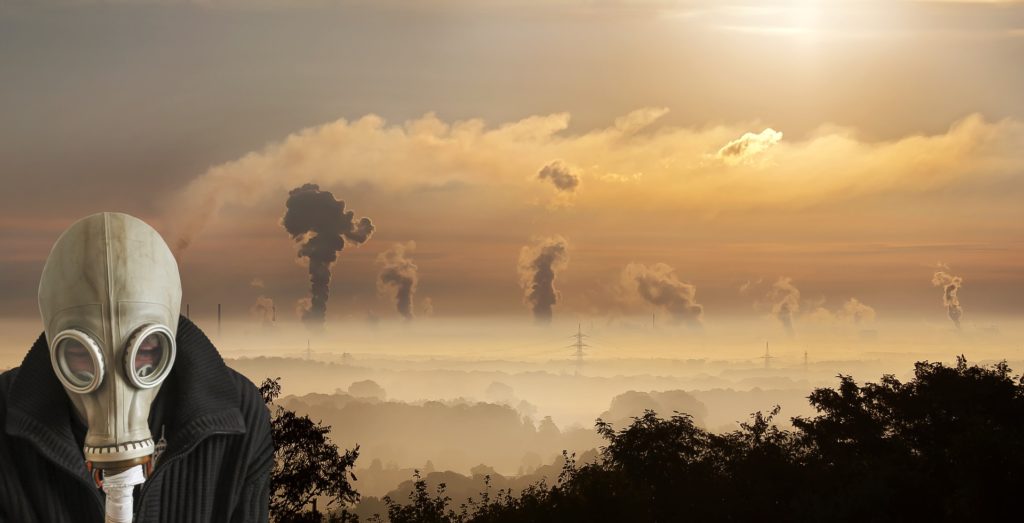Trump Administration’s Quiet Policy Change Could More Than Double Hazardous Air Pollution in California
Change in MACT applicability could result in 935 additional tons of toxic pollution emitted by stationary sources in the state each year
Earlier this year, EPA made a major policy change in how the agency evaluates stationary sources of hazardous air pollutants in a memorandum quietly issued without any warning or opportunity for public comment. This policy change was promptly challenged by California and two different coalitions of environmental and community groups (one suit was filed by California Communities Against Toxics, EDF, Environmental Integrity Project, NRDC, Ohio Citizen Action, and the Sierra Club; and another by Downwinders at Risk, Hoosier Environmental Council, and Texas Environmental Justice Advocacy Services). As E&E News/Greenwire reported yesterday, opening briefs were filed in the DC Circuit in these consolidated cases last week.
EPA regulates the emission of hazardous air pollutants (HAPs) like mercury, benzene, and formaldehyde from stationary sources under the Clean Air Act § 112. The 187 pollutants currently listed as HAPs are (as evident from the name) extremely hazardous to human health, even in very small amounts and very short exposure times. Some HAPs are carcinogenic (cancer-causing). Some cause birth defects. Some cause coughing, wheezing, and other impacts to the respiratory system. Some impact the cardiovascular system. Some cause all of the above. None of them are good.

The Clean Air Act directs EPA to set performance standards (National Emission Standards for Hazardous Air Pollutants, NESHAPs) for sources of HAPs in different industrial categories. EPA now regulates HAPs from more than 174 industrial source categories like aerospace manufacturing, dry cleaning, petroleum refining, and many others.
For each category, EPA sets technology-based performance standards based on the “Maximum Achievable Control Technology” (MACT) for that industry. The MACT standards for each industry can vary in stringency depending on whether the source is classified as a “major source” or an “area source.” If a source emits or has the potential to emit more than 10 tons per year of any single HAP or more than 25 tons per year in the aggregate of any combination of HAPs, it is deemed a major source. An area source is any source of HAPs that does not meet the major source thresholds. EPA has issued standards for both major and area sources in some industrial sectors, but many only have MACT standards for major sources.
Since the 1990 Clean Air Act amendments which adopted the industry-specific, technology-based approach described above, the EPA has made the area/major source determination on a “once in, always in” basis. That is, once a source is classified as a major source, it is permanently subject to the applicable major source MACT standard – even if its emissions fall below the 10/25 ton per year threshold. A hypothetical from EPA’s 1995 memorandum formalizing this interpretation illustrates why this policy is important:
Example: A facility has potential emissions of 100 tons/year. After compliance with the applicable MACT standard, which requires a 99 percent emissions reduction, the facility’s total potential emissions would be 1 ton/year. Under today’s guidance, that facility could not subsequently operate with emissions exceeding the maximum achievable control technology emission level. The facility could not escape continued applicability of the MACT standard by obtaining “area source” status through limitations on emissions up to the 10/25 ton per year major source thresholds.
That is, if a new source is required during pre-construction review to install control technologies through a major source MACT determination that reduces the source’s emissions by 99% to 1 ton/year, it’s not allowed to later “reclassify” as an area source and increase its emissions from 1 ton/year up to 24.9 ton/year, since that would represent a significant backslide (only a 75% decrease from its uncontrolled emissions of 100 ton/year, instead of the 99% control originally required by the applicable MACT standard).
As EPA further explained in its 1995 memo:
[A]pplication of MACT will reduce a major emitter’s emissions to levels substantially below the major thresholds. Without a once in, always in policy, these facilities could ‘backslide’ from MACT control levels. . . Thus, the maximum achievable emissions reductions that Congress mandated for major sources would not be achieved. A once in, always in policy ensures that MACT emissions reductions are permanent, and that the health and environmental protection provided by MACT standards is not undermined.
Of course, since this all makes sense and has been successful in reducing toxic air pollution from at least some industrial categories over the last three decades, the Trump administration now wants to blow it up. In a quietly issued January memorandum, EPA air chief Bill Wehrum announced the agency would no longer be following the “once in, always in” approach and would instead allow major sources to “reclassify” as area sources. This is yet another step in the long line of actions Wehrum already attempted once under the Bush EPA, but was thwarted the first time (in this instance, by a December 2007 Congressional rider).
The four page Wehrum memo gives very little guidance, and contains no information about how or when sources could be reclassified. Thus, much of the data and analysis described below assumes a worst case scenario (but, let’s be honest, hasn’t everything about the last two years been a worst case scenario when it comes to Trump’s EPA?).

Back in April, the Union of Concerned Scientists put together a fantastic breakdown of the facilities potentially impacted by this change, with maps (screenshot included above) detailing where emissions could increase across the country.
And now a declaration from CARB air pollution specialist Brian Clerico attached to California’s brief filed last week in the DC Circuit provides a detailed analysis of the potential impacts of revoking the “once in, always in” policy specifically on Californians. (the CARB declaration starts at p. 46 here, and is highly worth a read.) In particular, CARB notes there are at least 42 sources in California potentially impacted by this change in policy – and in the worst-case scenario (i.e., all of these sources are reclassified and no longer required to meet the prior major source MACT standard), “HAP emissions in California could more than double, increasing by as much as 935 tons per year.”
While this doubling of HAP emissions is staggering on its face, it is especially concerning given the disproportionate impacts from toxic pollution facing disadvantaged communities. Study after study shows that low income communities and communities of color are disproportionately burdened by pollution, and this is especially true for toxic pollution.
In addition, as CARB’s declaration details, this policy change could also have many other consequences beyond increased HAP emissions, since a NESHAP “major source” determination triggers reporting, monitoring, and other compliance requirements that could disappear if a source is reclassified.
Briefing by California and the environmental coalition focuses largely on the extreme procedural irregularities stemming from the quiet announcement of this policy change without any notice or public comment. But Wehrum has indicated EPA intends to adopt formal rulemaking for this policy change later this fall. So even if (when?) this absurd memo gets thrown out in court, the underlying policy change may still return and the consequences could be life-threatening for California communities.
UPDATE 10/17/18: As reported by E&E News/Greenwire, updates to the federal Office of Information and Regulatory Affairs (OIRA) website now show that EPA is expected to introduce a notice of proposed rule making in February 2019 to formalize Wehrum’s January 2018 memo.
Reader Comments
3 Replies to “Trump Administration’s Quiet Policy Change Could More Than Double Hazardous Air Pollution in California”
Comments are closed.







Meredith said;
“….hasn’t everything about the last two years been a worst case scenario when it comes to Trump’s EPA…?”
Dear Meredith,
The EPA made great progress during the Trump Administration under Secretaries Pruitt and Wheeler. Far from a worst case scenario, the EPA has become a glowing example of the economic benefits that stem from regulatory reform and streamlining. The last two years are a good start but there is a still a lot work to be done before we can rest.
Have a good day and don’t worry about HAPs – its no where near as bad as you seem to believe. Be happy!
I’m gone to inform my little brother, that he should also visit this web site on regular basis to take
updated from most recent information.
This excellent website certainly has all of the information I
wanted about this subject and didn’t know who to ask.